Roman Gambling – Gladiators, Chariots & Gambling in Rome
A lot can be said about the Roman gambling practices and entertainment. We gathered the most interesting details on the matter and described the most popular betting games played in Ancient Rome. Read on to find out who could afford to gamble and who dared to cheat.
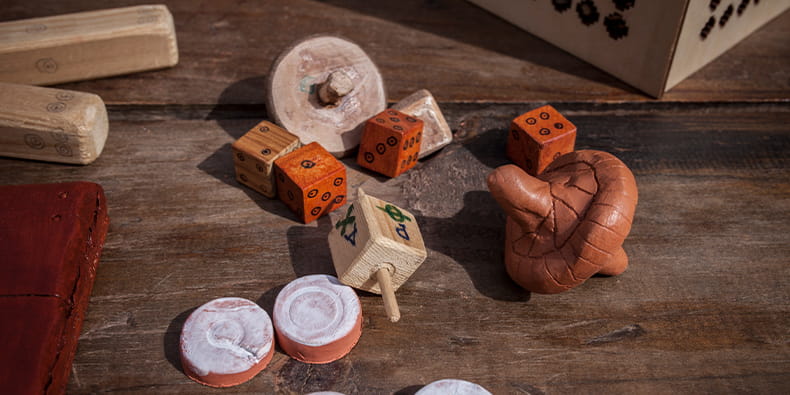
Besides the Ancient Roman gambling games, we also mentioned some laws that allowed or banned wagering games in the Roman Empire. Despite the legal measures, there were lots of gamblers and cheating attempts. We described a few of the most popular methods to win without skills. Below, you can see the main section of the article and choose which one to read first.
Was Gambling Legal in the Roman Empire?
The Ancient Roman view on gambling depended on the rulers and the current political state of Rome. Generally, gambling and wagering on anything was widespread, but there are known laws forbidding gambling (Lex Talaria, leges Cornelia, Publicita, and Titia). Roman dignitaries condemned excessive gambling, but at the same time, there were festivities where wagering on games was the main event.
Amidst this whirlwind of contradictions regarding gambling in Roman times, the laws didn’t enforce gambling debt collection. Quite the contrary, the gambler or his father (paterfamilias) could regain all property lost during gambling. It happened when the paterfamilias convinced the authorities that the player (a young person or a slave) was lured into wagering. This often happened because there was no legal gambling age.
In the spirit of the Ancient Romans and for the entertainment purposes of this article, we will accept that all forms of gambling and betting were acceptable to everyone. We will skip mentioning emperor Justinian’s (527-565) laws based on Roman legislation. They were applied throughout the Byzantine Empire, served in favour of the new Christianity, and therefore not applicable to the morals and life in Ancient Rome.
Gambling Games in the Ancient Roman Empire
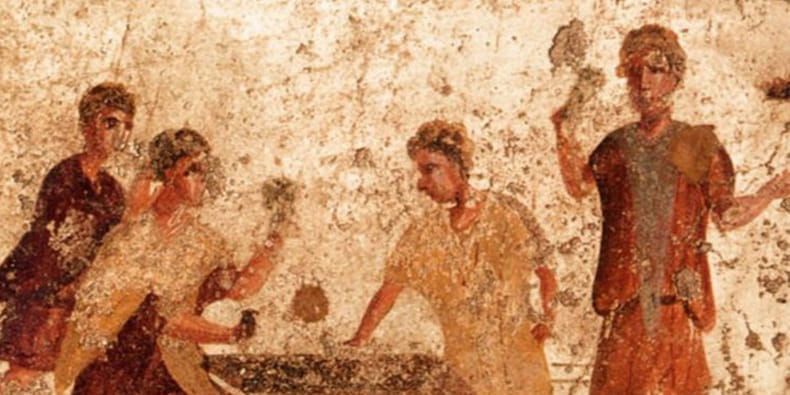
Historians have proven that the Ancient Roman gambling games are not so different from modern wagering entertainments. Even the answer to the question “Why do people gamble?” remains the same: people gamble for fun, fame, and fortune.
This is the place to say that the fans of the best online roulette sites will not find their favourite game here because roulette was invented during the Renaissance. Certainly, the Ancient Romans would have loved it, but they used wheels for more practical purposes. Here are some of the most widely spread betting games Romans enjoyed.
Lottery
The Ancient Roman lottery had many forms. For example, in the lottery history we read that the lottery first appeared in Ancient Rome around year 27 BC. Emperor Augustus held lotto draws during his parties and gave away prizes. Alternatively, the lottery was used to collect money from the commoners to fund military or construction projects.
Coin Toss
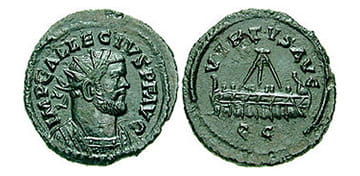
The coin was something even the poorest people had and therefore was used to settle disputes and scores or to win a prize in a hurry. The coin toss game “Capita aut Navem” (meaning “Heads or Ships”) had the same rules as the modern “Heads or Tails”.
The difference is that instead of animals or buildings on the modern coins, the Roman sestertii had images of ships.
Alea (Roman Dice)

Many sources about gambling in Ancient Rome inform us that the term “alea” described dice and dice games, which led to a dice player being called “aleator”. The Ancient Roman gambling dice had numbers 1-6 on their sides and were made with various materials that showed the status of their owner.
For example, the rich could have customised cubes made of ivory, onyx, amber, and precious metals, while the common people used wood, stone, and bone dice.
Dice were also used in board games and sometimes to settle disputes (instead of a coin). The Roman knucklebones (goats or sheep ankle bones) were also used for wagering games with or instead of dice. For example, five bones were thrown in the air, and the player had to catch them with the back of his hand. In another game, players threw the knucklebones, and whoever got the “Venus” (most points) was a winner, while the “Dog” was the lowest throw.
Child Games
Roman gaming began at earliest age with children games like “nuts”. In one of the versions, the player had to throw acorns, other nuts, or small objects into a jar. The jar was moved around a triangle drawn on the floor to increase the difficulty. In another version, three of the game pieces were placed together, with a fourth on top to form a “castle”. Another “nut” was thrown at them, and the goal was to destroy the nuts construction.
There are no preserved instructions on how the “Routa” (meaning “wheel”) game was played, but historians believe it is similar to tic-tac-toe. Each player had three game pieces, which had to be moved across a wheel (resembling a spider web). The winner was the player who managed first to place his pieces in a line.
Strategy & Board Games
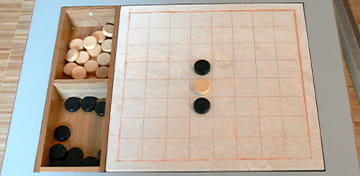
Many of the Ancient Rome strategy games represented battle tactics and often were played to improve the tactical thinking of young nobles and warriors. Whether for education or entertainment purposes, players and spectators often wagered small amounts or objects.
This is not a surprise because even today, we have chess, Risk, Battleships, and other war games played for fun. Such games have always been popular with the masses as they bring a certain feeling of excitement to the players and spectators.
Sometimes the different Ancient Rome board games had special markings (leaves, crosses, letters) and were played with dice and pawns. The “Ludas Duodecim Scriptorum” (“The Game of Twelve Inscriptions”) and “Ludas Latrunculorum (“Game of Bandits”) were quite popular. Their carved stone or wooden boards were found even in distant lands the Roman soldier or merchant reached.
Gladiator Fights & Chariot Races
In the Roman gambling games list, the contests of strength, speed, and agility were considered gentlemanly games. This means that the history of gambling in sports began when street fights and competitions were taken to the arena and became a popular entertainment for the crowds.
Wagering During the Colosseum Games
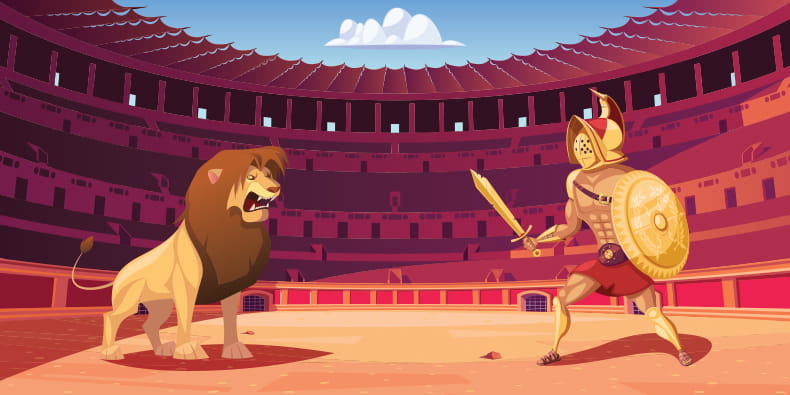
The Colosseum in Rome was used for nearly five centuries after its inauguration in A.D. 80. Here, up to 250,000 travellers, commoners, and nobles enjoyed the bloody spectacles organised in the name of an emperor or as part of holiday festivities. Roman gambling practices included wagering on all phases of the games:
- 🐆 Venatio: animal fights, animal-human fights, and hunt
- 🦹♂️ Ludi Meridian (Midday Games): executions of criminals, prisoners of war, barbarians, and others condemned to die
- ⚔️ Munus Iustum Atque Legitimum (“a proper and legitimate gladiator show”)
Gambling in Roman times also included wagering on the fate of the defeated warriors. The referee asked the crowd whether or not to spare the defeated warrior. If most people had their left index finger raised, the referee shouted “Missus!” (“Dismissal!”). Those who deserved to die heard “Iugula, verbera, ure!” (“Slit his throat, beat, burn!”).
Gladiators & Gladiatrixes Fights
Even though the Roman gambling dice were in every pocket, everyone forgot about them during the gladiators’ fights in the Colosseum. The movies show us glorious fighters with their agenda against the empire. The truth was that most of the fighters were slaves, former soldiers, and commoners who recognised fighting as a path to a good life.
Most of the time, the gladiators and gladiatrixes (female gladiators) received excellent training, food, and medical care because they were considered extremely expensive property. They were encouraged to behave like brothers-in-arms and hold fair fights.
The gladiators differed in weapons, clothing, skills, strength, role in the battle, and other criteria. There is a lot to be said, but when it comes to Ancient Roman gambling, people wagered on a fighter because of their battle fame. Alternatively, many gamblers preferred to place bets on the battle style specific for each of the 25 gladiator types.
Unlike modern sports betting, the wagering on a gladiator in Ancient Rome did not stop until the end of the battle. Many rich players liked to increase the stakes during the fight, especially when they see that the tables turn and their champion prevails. A proper gift for gamblers like those was the weapon, or a piece of the armour.
The legendary gladiators and gladiatrixes were highly desired companions and bodyguards because of their physical strength and fighting skills. Few people could afford to buy them for other purposes besides battles in the arena.
By being a good fighter and following the rules, the gladiator could climb up the ranks starting with False Gladiator (beginner/trainee), Gladiator, Veteran Gladiator, Champion (who could gain his freedom), and Doctore (gladiator trainer). Each rank brought more comfortable establishments, better food, entertainment, money, and freedom.
Roman Chariot & Horse Races
Many of the great horse racing movies and especially the historical films give us an idea of how the horse competitions were held in the past. The Roman gambling chariot racing dates back to the city’s founder, Romulus, and the construction of Circus Maximus (the first racetrack in Rome) in the 6th century BC.
Chariot gambling in Ancient Rome was open to the public, and everyone who could afford to pay for entrance to the arena could see the races. The spectators in Circus Maximus anxiously waited for the race to begin and bet on the winner. There are many preserved detailed records about the performances of horses and drivers, and many rich people used them to predict the next winner. Here are some basic details all gamblers know by heart:
| 🏟️ Chariot Races | 🏛️ Chariot Races Details |
|---|---|
| 📅 Frequency | Could be up to 24 races per day |
| 🐎 Chariot Types | Quadrigae (four-horse chariots) and Bigae (two-horse chariots with inexperienced charioteers) |
| 🔰 Teams | Rome had four factions (professional racing stables): Blues, Greens, Reds, and Whites associated with a god and a season. The Blues and the Greens were constant rivals and the largest factions. The Golds and the Purples fractions appeared briefly but did not last long. |
| 💫 The Race | There were 12 starting gates for up to 12 chariots. There were 7 laps over a 2000-foot-long sand track. On the straightway had to maintain maximum speed (almost 40 miles per hour) and jostle wheel-to-wheel on the turns without crashing or hurting the horses. |
| 🏆 Winners & Prizes | The winner crossing the finish line was announced with a trumpet. The driver and the horses were decorated with wreaths and flowers. The driver received a palm branch and prize money. Then the winner took a victory lap before going to rest. |
This was one of the Ancient Roman gambling games where in the end, the contestants could win as much as the gamblers. A good example of skills and luck is Gaius Appuleius Diocles, who won 1462 chariot races out of 4257 races for different fractions. He was 42 years old when he retired after a 24-year career. The total winnings for his master were 35,863,120 sesterces, and we can only hope that he got a good portion of it.
Gamblers & Cheaters in Ancient Rome?

The history of the casinos shows that for a large part of the past, gambling was for the rich. The information we have about gambling in Roman times shows that that is not true. Anyone was welcome to wager according to their financial limits, and the Roman soldiers’ gambling even helped spread the local games in foreign lands.
Who Could Afford to Gamble in Ancient Rome?
Emperors like Augustus and Claudius who gambled regularly on their feasts had the time to create new wagering games and write books about Roman games. Emperor Lucius Verus is an example of a serious player because it is said that he played every night. Just like today, professional gamblers also focused on games of skills.
A sign in Callixtus’ catacombs: “If you have the chance in your favour, I shall win with skills! “Gambling And Cheating In Ancient Rome”, by Rodolfo Lanciani
Unlike them, most poor people and the slaves enjoyed the Ancient Roman gambling games during the Bona Dea festival and Saturnalia. Then, rich and poor turned to the gods of gambling, and especially Fortuna, the goddess of fate, abundance, luck, and patroness of Ancient Roman gambling.
Cheating in Ancient Rome

One interesting side in the history of ancient gambling depicts the cheating tactics used while gambling in Ancient Rome. The cheaters were in all levels of society and had different reasons to cheat or use their gambling wins as leverage.
Some popular cheating tools were trick coins, weighted dice, and magic. The issue with faulty coins was easily resolved by unifying the currencies. Players placed the dice in a cup (or box) to prevent cheating and flipped them over on a flat surface. Once the cup was lifted, everyone could see the score.
Using good luck symbols was wise especially when players used magic. This tactic was popular with chariot races but soon was forbidden by law. Even so, many tablets with “illegal spells”, hexes and curses were made before the race to jinx the opponent.
Roman Gambling Interesting Questions
The topic of Roman gambling is extended, and many questions arise with every discovery. Our article lists some of the most popular games, and competitions Romans wagered on. Now, we will answer several interesting questions on the matter and add links leading to the relevant sections of this article.
Similar Articles


